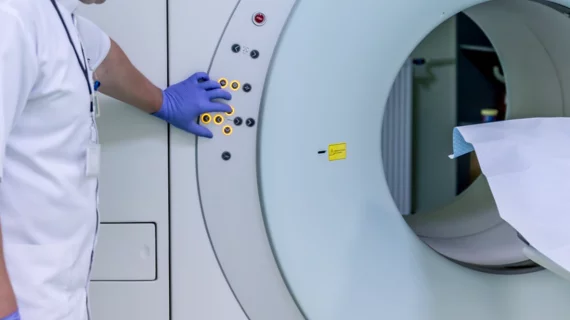Including MRI in the routine evaluation of endometrial cancer could help assess the aggressiveness of tumors while stratifying which patients may benefit from surgeries like lymphadenectomy, researchers reported in Clinical Radiology this June.
Though doctors are armed with a wealth of information for assessing the prognosis of endometrial cancer—like the status of lymph node metastases, the depth of myometrial invasion, tumor grade and microsatellite instability—MR imaging hasn’t been a standard part of the toolkit, corresponding author P.R. Bhosale and colleagues in Houston, Texas, wrote. Its use is dependent on tumor grade, they said, but when patients qualify, MRI can help assess myometrial invasion and lymphadenopathy.
Dynamic contrast-enhanced (DCE) MRI also has the ability to characterize solid tumors non-invasively, Bhosale et al. wrote, using signal intensities. According to the study, endometrial cancer tends to show a high signal on T2W1 and enhances less than the myometrium on DCE images.
“Although MRI has not been used to assess the grade of the tumor, simple signal intensity characteristics of the tumor have not been used to assess the biological behavior of endometrial cancer and survival,” the authors said. “The purpose of this study was to identify potential MRI biomarkers by using the signal intensity of the tumor to predict the aggressiveness of endometrial cancer.”
The research team retrospectively analyzed 71 patients for their research, all of whom had been diagnosed with endometrial cancer and underwent MRI staging. Bhosale and co-authors assessed the signal intensity of tumors on sagittal T2-weighted imaging alongside depth of myometrial invasion, tumor grade and subtype, lymphovascular invasion and microsatellite stability.
They found that tumors with a qualitative signal higher than that of a normal myometrium were more likely to have lymphovascular space invasion, suggesting signal intensity might be a good indicator of tumor aggressiveness. Tumors with a higher signal intensity-tumor ratio had a higher chance of being microsatellite stable, and endometrial tumors with a signal intensity of less than 209 on delayed T1-weighted sequences saw longer recurrence-free survival than those with an intensity tumor ratio of 209 or greater.
“The signal intensity of endometrial cancer on MRI may predict the aggressiveness of the tumor and microsatellite instability status, lymphovascular space invasion, as well as depth of myometrial invasion,” the authors said. “The present findings suggest that tumors with high signal intensity on T1W1 obtained 90 seconds after DCE have a tendency to be microsatellite stable and are associated with improved recurrence-free survival. Conversely, tumors with lower signal intensity on the delayed DCE were associated with lymph node metastases, suggesting that MRI may be used as a prognostic indicator.”
Tumor subtype and grade weren’t associated with any MRI findings, they said.
“Imaging may be a factor worth adding to prognostic modeling and may be used to help stratify which patients may benefit from comprehensive surgical staging, including lymphadenectomy,” Bhosale et al. wrote. “These findings need to be further explored in prospective trials.”

